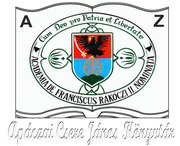Ezzel az azonosítóval hivatkozhat erre a dokumentumra forrásmegjelölésben vagy hiperhivatkozás esetén:
https://dspace.kmf.uz.ua/jspui/handle/123456789/4633| Cím: | Computational Study of Catalytic Urethane Formation |
| Szerző(k): | Hadeer Q. Waleed Csécsi Marcell Rachid Hadjadj Ravikumar Thangaraj Pecsmány Dániel Michael Owen Szőri Milán Fejes Zsolt Viskolcz Béla Fiser Béla Bela Fiser Фішер Бейло |
| Kulcsszavak: | catalysts;urethane formation;catalyst-free;DFT;proton affinities;composite method |
| Kiadás dátuma: | 2022 |
| Kiadó: | MDPI |
| Típus: | dc.type.collaborative |
| Hivatkozás: | In Polymers. 2022. Volume 14., Issue 1. 11 p. |
| Sorozat neve/Száma.: | ;Volume 14., Issue 1. |
| Absztrakt: | Abstract. Polyurethanes (PUs) are widely used in different applications, and thus various synthetic procedures including one or more catalysts are applied to prepare them. For PU foams, the most important catalysts are nitrogen-containing compounds. Therefore, in this work, the catalytic effect of eight different nitrogen-containing catalysts on urethane formation will be examined. The reactions of phenyl isocyanate (PhNCO) and methanol without and in the presence of catalysts have been studied and discussed using the G3MP2BHandHLYP composite method. The solvent effects have also been considered by applying the SMD implicit solvent model. A general urethane formation mechanism has been proposed without and in the presence of the studied catalysts. The proton affinities (PA) were also examined. The barrier height of the reaction significantly decreased (∆E0 > 100 kJ/mol) in the presence of the studied catalysts, which proves the important effect they have on urethane formation. The achieved results can be applied in catalyst design and development in the near future. |
| URI: | https://dspace.kmf.uz.ua/jspui/handle/123456789/4633 |
| ISSN: | 2073-4360 (Online) |
| metadata.dc.rights.uri: | http://creativecommons.org/licenses/by-nc-nd/3.0/us/ |
| Ebben a gyűjteményben: | Fiser Béla |
Fájlok a dokumentumban:
| Fájl | Leírás | Méret | Formátum | |
|---|---|---|---|---|
| Fiser_Computational_Study_Catalytic_2022.pdf | In Polymers. 2022. Volume 14., Issue 1. 11 p. | 7.96 MB | Adobe PDF | Megtekintés/Megnyitás |
This item is licensed under a Creative Commons License





